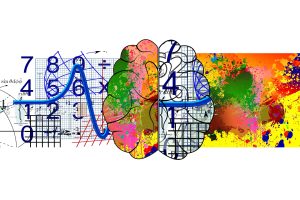Success within departments or organizations often hinges on the ability to harness the strengths of both creative and analytical thinking. Creative thinkers bring innovation, out-of-the-box ideas, and artistic flair to problem-solving, while analytical thinkers excel at logical reasoning, data-driven decision-making, and structured problem-solving methodologies. Bridging the gap between these two cognitive styles is crucial for fostering collaboration, driving innovation, and achieving holistic solutions. Here’s how to effectively bridge the gap between creative and analytical thinkers within your team:
Understanding Cognitive Diversity
- Recognize Strengths and Differences: Appreciate that creative thinkers thrive in exploring possibilities, generating novel ideas, and envisioning future trends, while analytical thinkers excel in data interpretation, problem deconstruction, and systematic planning.
- Value Diverse Perspectives: Foster a culture where diverse viewpoints are respected and integrated into decision-making processes, leveraging both creative and analytical insights to achieve comprehensive solutions.
Cultivating Collaboration
- Cross-Functional Teams: Form interdisciplinary teams that combine creative and analytical talents, encouraging collaboration and knowledge sharing across different skill sets and perspectives.
- Facilitate Brainstorming Sessions: Organize brainstorming sessions that blend creative idea generation with analytical evaluation, allowing team members to explore innovative concepts while grounding ideas in practical considerations.
Communication and Mutual Understanding
- Clear Communication Channels: Establish open communication channels that facilitate dialogue between creative and analytical thinkers, ensuring clarity, transparency, and alignment of goals and expectations.
- Translate Complex Concepts: Bridge the gap by translating technical or complex concepts into accessible language that resonates with both creative and analytical thinkers, facilitating mutual understanding and collaboration.
Integrated Problem-Solving Approaches
- Design Thinking: Adopt design thinking methodologies that integrate creative ideation with analytical problem-solving frameworks, emphasizing empathy, experimentation, and iterative improvement.
- Agile Practices: Implement agile practices that promote flexibility, adaptability, and iterative development cycles, enabling teams to combine creativity with analytical rigor in delivering incremental innovations.
Leveraging Technology and Tools
- Visualization and Data Storytelling: Use visualization tools and data storytelling techniques to present insights in a visually compelling manner, bridging the gap between qualitative creativity and quantitative analysis.
- Collaborative Platforms: Leverage collaborative platforms and project management tools that support real-time collaboration, documentation, and version control, enhancing communication and productivity among team members.
Encouraging Continuous Learning and Adaptation
- Training and Development: Offer training programs and professional development opportunities that cater to both creative and analytical skill sets, encouraging continuous learning and skill enhancement.
- Feedback and Reflection: Foster a culture of constructive feedback and reflection, encouraging creative thinkers to appreciate the value of data-driven insights, and analytical thinkers to embrace innovative approaches.
Bridging the gap between creative and analytical thinkers requires embracing cognitive diversity, fostering collaboration, enhancing communication, integrating problem-solving approaches, leveraging technology, and encouraging continuous learning. By embracing the strengths of both cognitive styles and promoting an inclusive work environment that values diverse perspectives, organizations can harness the full potential of their teams to drive innovation, solve complex challenges, and achieve sustainable growth in the dynamic tech landscape.

